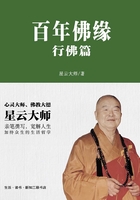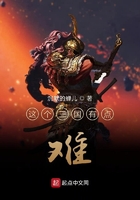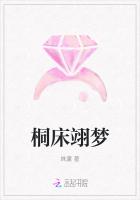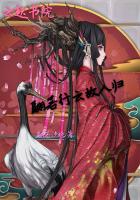Much has been made ofthe emergence in Kyoto around the turn of the eleventh century of a blue—and—green landscape painting mode initially used to decorate the waHs,doors,and screens of Buddhist haHs.A celebrated example is the set of paintings inside the Amida Hall at Byodoin,which was completed around 1053.This blue —and—green mode,labeled yamatoe(Japanese painting)by later commentators,has been touted as exclusively suited to classical Japanese taste and aestheties.It has also been understand as marking a departure from continental uonlls as exemplified by Chinese landscape painting in the monochromatic technique.Many scholars believe that yarnatoe is unlike any other painting tradition in continental Asia and thus marks a specificaHy Japanese visual and cultural production.
It is therefore intriguing that the painting programa inside certain middle and late Tang caves at Dunhuang,such as Cave 159,show striking morphological and structural similarities to the yamatoe mode in its Buddhist contexL Of particular interest is the representation of panels or screens,with rolling green hills receding into space marked by washes in brown,Oil the walls surrounding the central worship space in such caves.Later caves at Mogao and elsewhere,also yidd close parallels to classical Japanese painting conventions for the interiOrs of Buddhist spaces.
This paper is a first step toward exploring the possibility that Kyoto painting practice of the tenth and eleventh centuries was directly related to knowledge of the styles and techniques that are also seen at Dunhuang and other Buddhist caves of the Silk Road region.It is framed,not as a statement,but as a research question.
日本画在敦煌?
何咪咪
(耶鲁大学)
在11世纪之交,京都出现青绿山水画模式,这种绘画模式最初通常用来装饰佛教殿堂的墙壁、门窗、屏风,一个著名的例证是the Amida Hall at Byodoin内的一组绘画,这组绘画完成于1053年。这种青绿色的绘画模式,后世的评论家们认为是日本画。并极力吹捧这种模式符合古典的日本品味和审美观。它也被视为从以单色技巧的中国山水画为例证的大陆规范中分离出来。许多学者认为日本画和其它任何亚洲大陆上的绘画传统都不一样,所以它标志着一种日本特殊的视觉和文化产物。
因此,在一些莫高窟中、晚唐洞窟中的绘画激起了人们的好奇心。例如第159窟,在佛教内容方面显示了与“日本画”在形态和结构方面都有显著的相似性。特别有意思的是对壁板和屏风的描绘。在这些洞窟中心佛坛周围的墙壁上,起伏的绿色小山丘逐渐隐入棕色。在莫高窟和其它地区的后期洞窟中,在佛教空间内部(interiors of Buddhist space)也出现了类似于日本绘画传统的内容。
这篇论文是对10世纪和11世纪京都绘画与出现在敦煌和丝绸之路上的佛教石窟中的绘画之间有无直接关系的初步探索。这里提出这个问题,是作为一个研究问题,而不是一个结论。
Why Medieval Chinese Buddhists Sponsored Grotto Statuary
Amy McNair
(University of Kansas)
The grotto statuary and inions of Longmen Grottoes reveal several beliefs about the functions of statuary in the spirit realm.1)Images of the Buddha were made to propagate the faith and convert the unbelievin.2)Images of the Buddha were made to create a body for the dharmakaya,or Buddha—principle,to inhabit,So that believers could make contact with the best possible substitute for a living Tathogata.3)Icons were made to generate karmic merit.The act of making the icon generated merit,while the offering of worship to the icon also generated merit.The merit could be transferred and assigned to any beneficiary represented by an image or named in a dedicatory text.4)Icons were carved from the‘imperishable’stone of Longmen and inside grottoes in the belief that this would preserve the dharma through the coming cataclysm at the end ofthe age.5)Icons were produeed in order for the deity represented to operate on the donor’s behalf in the spirit realm.6)Icons were produced in order to influence the deity named in the inion on the donor’s behalf in the spirit realm.7)Icons were made to represent rosters of Buddha names,either as guides for the penitential recitation of Buddhandma ures by believers or intended as a permanent invocation of the names in the spirit realm.
中世纪中国佛教徒开窟造像之原因
Amy McNair
(堪萨斯州大学)
龙门石窟的洞窟造像及其题记为我们揭示了几点塑像在精神领域的功用:
1、塑造佛像来传播信仰,转化非信仰者。
2、佛像的塑造为佛的法身或佛体构建了一个实体借以寄居,这样佛像便作为现实如来最合适的代替品使信徒们可以与之直接接触。
3、塑造圣像是为了造功德业绩。塑造圣像的这种行为是在造功德,而对圣像崇拜的供养也是造功德,由供养画像或供养文书中的人名都可以转达供养人的功德。
4、龙门石窟中用“不朽”的石头雕刻佛像一定是为了能够在一个时代末期可能到来的动荡中护佑佛法。
5、代表神的造像是为了表现供养者精神中的这个神。
6、塑造佛像是为了加深题记中所命名的这尊神在供养人心目中的影响。
7、造像为了表现众佛,要么是指引信仰者进行佛经礼忏,要么就有可能是寄托他们对精神中的佛祖的一种永久的祈求。















